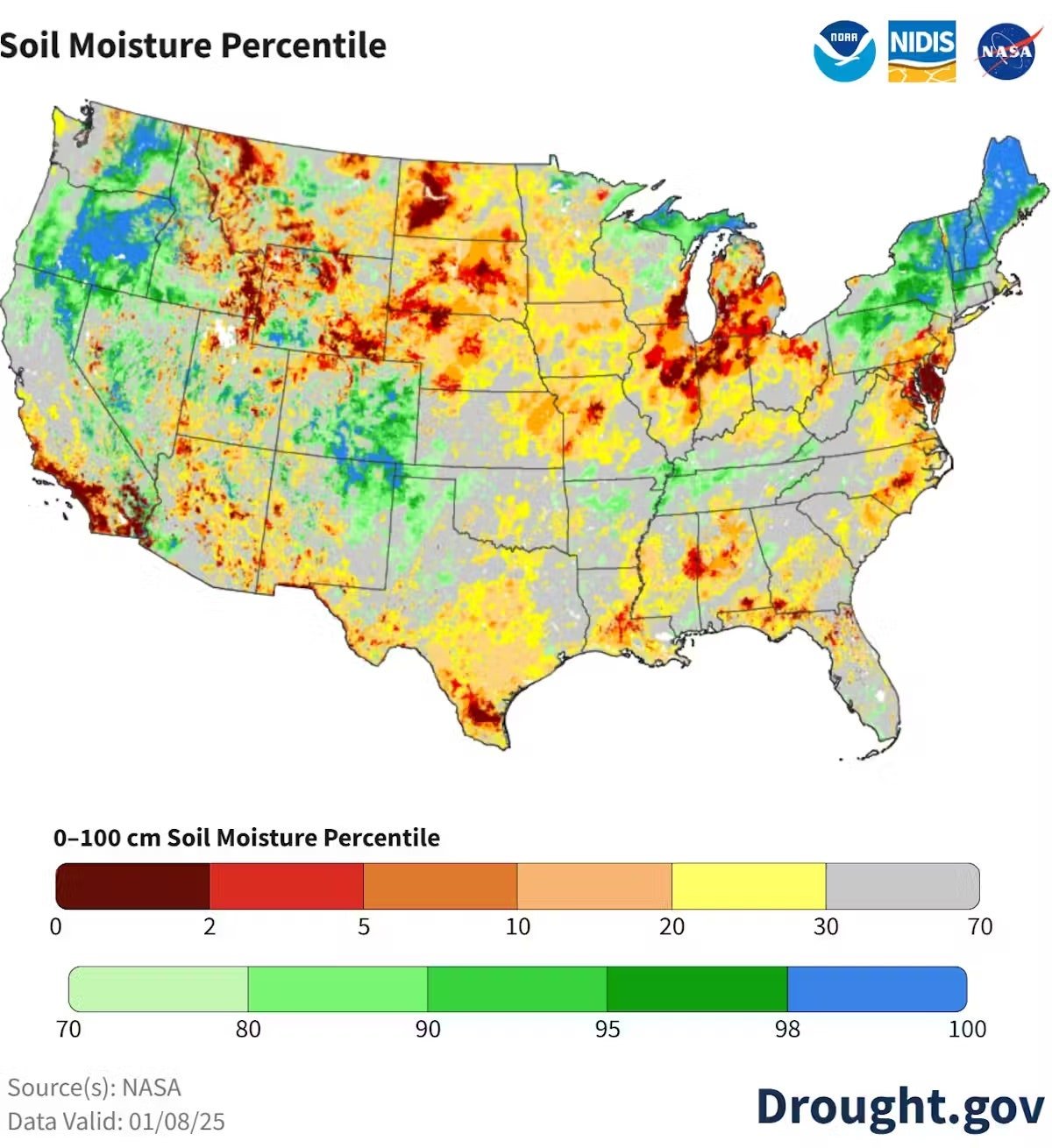Physical Address
304 North Cardinal St.
Dorchester Center, MA 02124
Physical Address
304 North Cardinal St.
Dorchester Center, MA 02124

This article Republished from the conversation Under a Creative Commons License.
Dry conditions across Southern California set the stage for several deadly wind-driven wildfires in early January 2025. Thousands of houses and other structures were burnt Los Angeles area.
Ming Panis a hydrologist at the University of California-San Diego Western Weather and Water Extremes CenterTrack the state’s water supply. He uses charts and maps to put Southern California’s aridity into perspective.
In early January, most of Southern California had soil moisture 2 percent below historical records For that day in this region. It is very low.
California hydrologists watch the sky very closely Starting from OctoberWhen California’s water year begins.
The state receives very little rain from May through September, so the late winter and winter are crucial for filling reservoirs and building snowpack for water supplies. Depends on California The Sierra snowpack accounts for about one-third of its freshwater supply.
However, Southern California started the 2024-25 water year quite dry. The region receives some rain from an atmospheric river in November, but not much. After that, mostly Atmospheric rivers It hit the West Coast from October to January northward to Washington, Oregon, and northern California.
When the air is warm and dry, breathing And evapotranspiration draws water from plants and soil. This leaves dry vegetation that can provide fuel Flying embers to spread firesAs the Los Angeles area saw in early January.